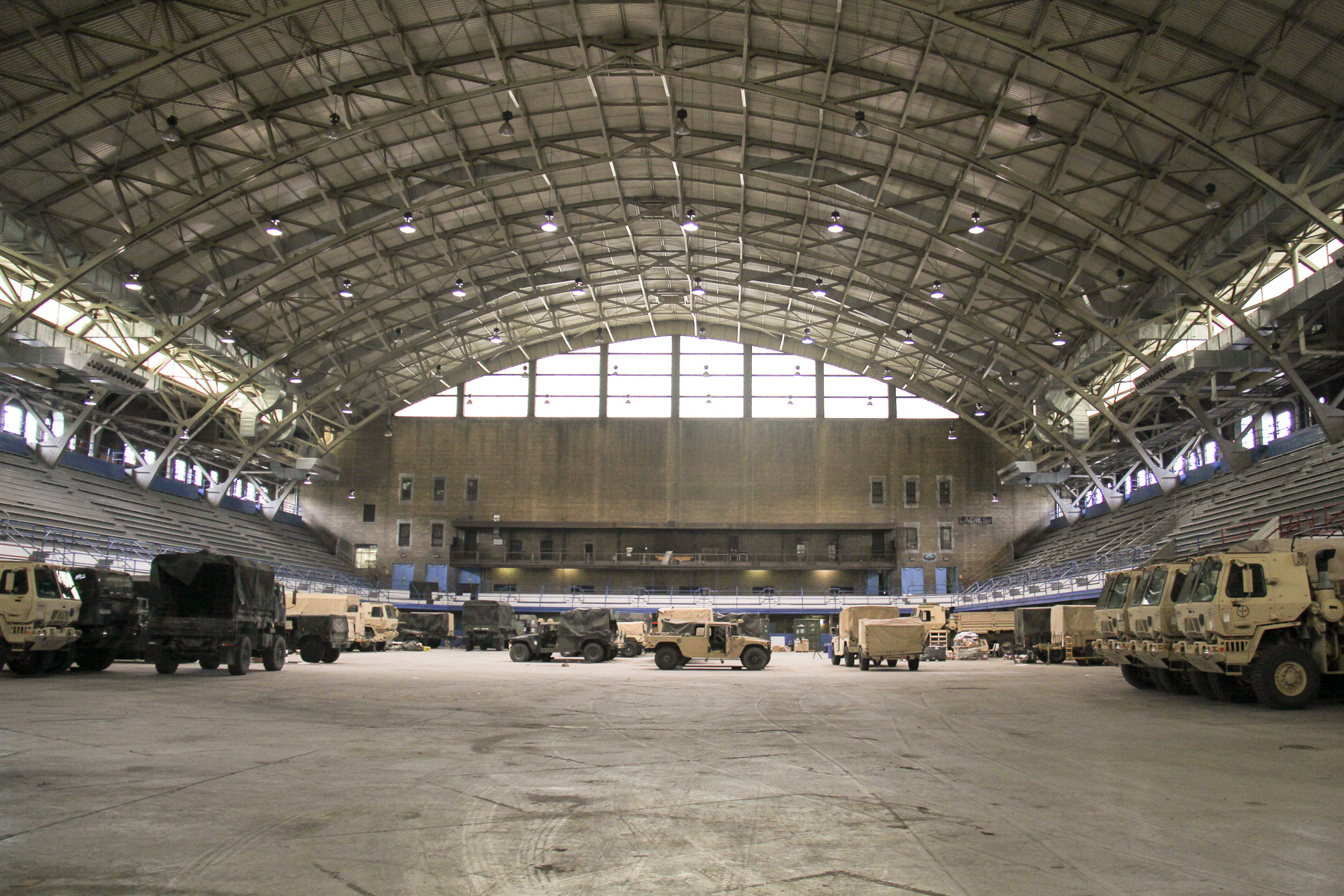What’s That Building? General Richard L. Jones Armory
By Dennis Rodkin

What’s That Building? General Richard L. Jones Armory
By Dennis RodkinCarvings of a Roman soldier, medieval knight, Native American warrior and World War I doughboy peer out from their posts around the edges of a mammoth limestone building in Washington Park.
They’ve stood watch at this armory since it was completed in 1931.
What’s That Building fan Mike Sykes knew that in 1970 the structure was renamed in honor of General Richard L. Jones,an African American who served in both World Wars, was a leader of the Illinois National Guard and was the U.S. Ambassador to Liberia.
But Sykes wanted to know more — and it turns out there’s a lot more.
Armories are essentially office and storage buildings for military units. But this particular armory is different. From its mammoth arena to its appearance in Spike Lee’s 2015 film Chiraq, it’s been a part of Chicago history for 88 years.
And it’s still an active military headquarters. One of two Illinois National Guard units in the building — the 2nd Battalion 178th Infantry —is scheduled to ship out to Afghanistan this summer. The unit’s lineage includes the “Fighting Eighth,” the nation’s first all-black National Guard unit that formed in 1898 to fight in the Spanish-American War.

The other unit headquartered in the building is the 122nd Field Artillery Battalion, which dates back to 1893 and served in both World Wars and Afghanistan.
Last week, Sykes and I toured the building with Maj. Bart Daly and Lt. Col. Brad Leighton. Here’s what we learned about the armory.

Who designed it?
The armory was designed by the architecture firm Perkins, Chatten & Hammond, a short-lived firm (1929-33) that also designed the Northwest Tower at 2018 W. North Ave. Today, the Art Deco building is known as the Robey Hotel in Wicker Park.
The lead architect, Dwight Perkins, had previously designed 40 Chicago public schools and helped organize the Cook County Forest Preserves.
Who made the sculptures?
The breathtaking carvings — which include renderings of the original Fort Dearborn and the slogan “Facta Non Verba” (“Deeds, Not Words”) — are credited to Fred Torrey,whose work includes a war memorial at the Gettysburg battlefield and the sculptures on the Art Deco tower at 333 N. Michigan Ave.

His wife, Mabel Landrum Torrey, was also a sculptor. And while they sometimes collaborated — such as on a statue of Abe Lincoln and his son, Tad, at the Iowa State Capitol — but there’s no mention of her pitching in on the armory.
What makes this armory different?
Much of the interior is what you might expect of a military building:A somewhat utilitarian structure with conventional brick walls and little adornment.
But the first floor includes a pair of more formal, ornamented spaces: the memorial room and the attached hallway. Today, those spaces are used for ceremonies and formal events. The area includes multi-colored wood-beamed ceilings, tall windows, a carved Art Deco arrowhead pattern along the walls, and hefty light fixtures with metal sunbursts.

The other notable space is the cavernous arena, which occupies about half the building’s 290,000 square feet. Beneath a barrel-vaulted metal roof, the arena is big enough for at least four basketball courts (and bleachers). Currently, the vast space is being used as a parking lot for a fleet of vehicles that will ship out with the 178th later this month.
Armories don’t typically have arenas, but this building was intended to also serve the community in one of Chicago’s finest parks. The arena has hosted races, rodeos, dog shows and sporting matches.
And it was in the movie Chiraq. You can see it at 1:10 here:
Are there tunnels inside?
From 1942 to 1951, the armory was used to store and process uranium for the Manhattan Project, a research venture that led to the creation of nuclear weapons during World War II.
In 1987, radioactive traces were reported eradicated, but rumors persist of secret tunnels that ran from the basement to University of Chicago research labs. But Maj. Daly definitively stated there were no such tunnels.
Before the 1987 remediation, a detailed report was issued — about 500 pages — on the investigation and cleanup. Daly said there is no mention of tunnels connecting to the university.
“They were so detailed in that report, if there were tunnels, they’d be mentioned somewhere,” he said.
Dennis Rodkin is a real estate reporter for Crain’s Chicago Business and The Morning Shift’s “What’s That Building?” contributor.
